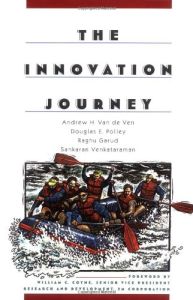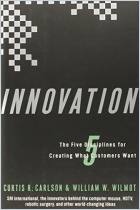Acesse a sua conta getAbstract para obter o resumo!

Acesse a sua conta getAbstract para obter o resumo!
Andrew H. Van de Ven, Douglas E. Polley, Raghu Garud and Sankaran Venkataraman
The Innovation Journey
Oxford UP, 1999
Sobre o que é?
A detailed dissection of how companies come up with and implement new ideas.
Recommendation
Andrew H. Van de Ven and his co-authors, quite an innovative crew, have crafted a thorough academic model of the corporate innovation process. The authors use a river rafting trip analogy for the innovation journey, where uncharted, challenging territory demands leadership and cooperation. The river metaphor is good to keep in mind here, because the subject matter gets a little dry. The team found that common factors exist in every quest for innovation, and constructed a cohesive model for innovators. The material - resulting from 17 years of research at the University of Minnesota’s Minnesota Innovation Research Foundation (MIRP) - is truly exhaustive, detailed and academic. Because of this, a reader with no background in innovation theory might find it somewhat arcane. getabstract recommends this book to anyone who wants to understand the complex process of corporate innovation.
Summary
About the Authors
Andrew H. Van de Ven led the MIRP research project. He is the Vernon H. Heath Professor of Organizational Innovation and Change in the Carlson School of Management at the University of Minnesota. Douglas E. Polley, Raghu Garud, and Sankaran Venkataraman all received doctorates from the Carlson School of Management, and were integral members of the MIRP team.




















Comment on this summary